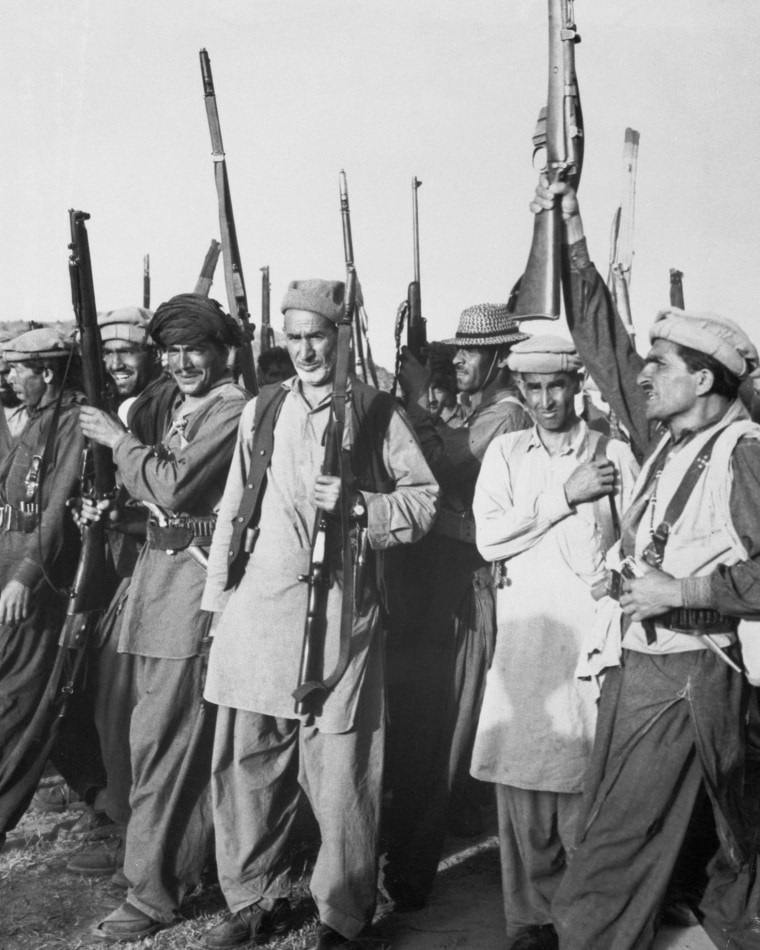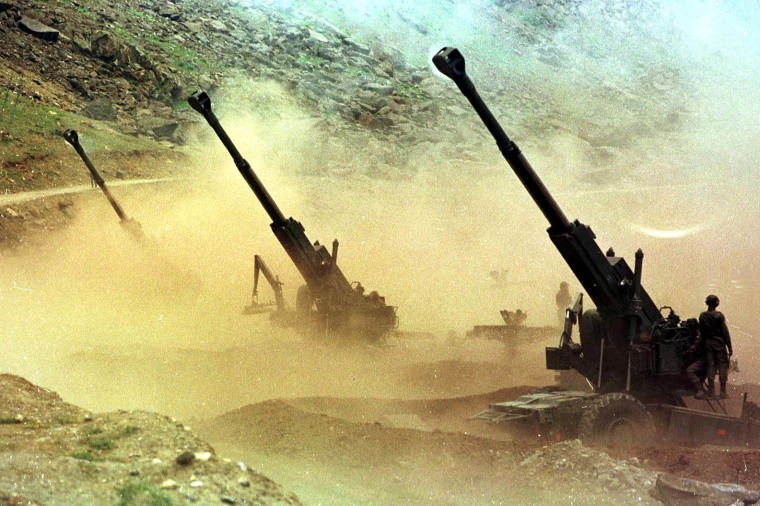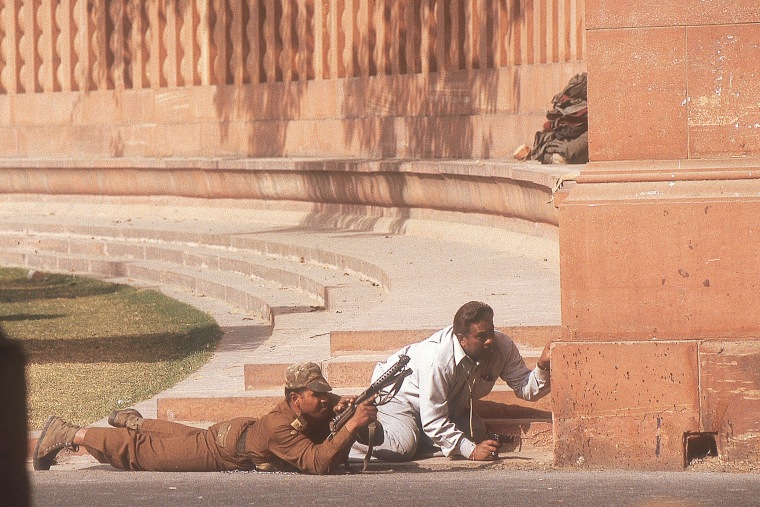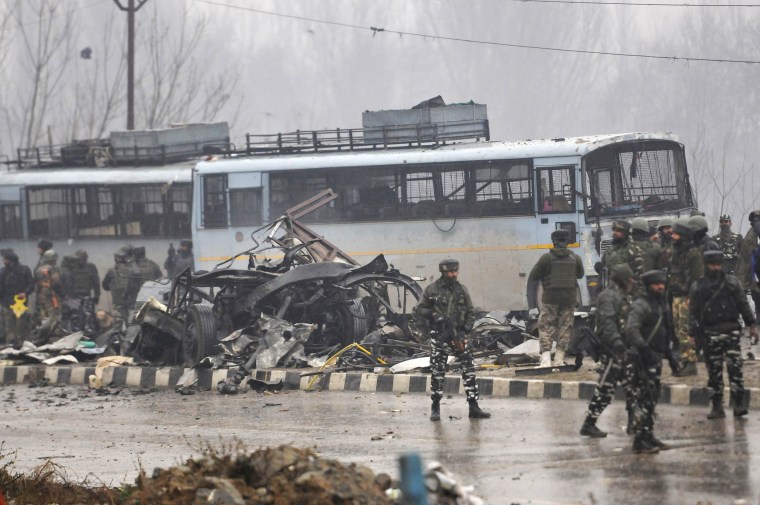Pakistan has vowed to retaliate after India launched missiles at it early Wednesday, as tensions escalated dramatically between the nuclear-armed neighbors.
India said the deadly strikes had targeted “terrorist camps” and were in response to the massacre last month of 26 people, most of them Indian tourists, in Indian-administered Kashmir.
New Delhi has long accused Pakistan of supporting cross-border terrorism and blamed Islamabad for the Kashmir attack, the latest in a long history of conflict between the two countries.
Here’s a look at that history:
1947-48
With the end of British colonial rule in 1947, the Indian subcontinent was divided into what became Hindu-majority India and Muslim-majority Pakistan. A territory then called East Pakistan is now known as Bangladesh.
Over a million people are estimated to have died in the explosion of communal violence that accompanied the dismemberment of the British Raj, as huge numbers of Hindus fled their homes in Pakistan to cross to India and Muslims in India did the same to Pakistan.

The mountainous state of Jammu and Kashmir, which at the time was still a kingdom, soon became a flashpoint. Pakistan backed an insurgency there, leading to the first war with India.
Kashmir’s Maharaja Hari Singh sought help from the Indian military in exchange for ceding territory, and in January 1949 the war ended in a ceasefire after U.N. intervention. Details of the agreement, under which the two new and unstable countries controlled parts of Kashmir, have been disputed ever since.
1965
Pakistan, still hoping to gain control of the mountainous region, launched an incursion across the ceasefire line. India responded by sending ground troops into the Pakistan-controlled areas.

The fighting spread beyond Kashmir, with large mobilizations of aerial and ground forces and some of the largest tank battles in history. This conflict was ultimately settled with another U.N.-brokered ceasefire.
1971
Voters in what was then known as East Pakistan sought autonomy from West Pakistan, and fighting broke out in 1971. The nation of Bangladesh was born after a nine-month war.
The conflict triggered another wave of displacements, with millions leaving formerly East Pakistan for India. New Delhi used the conflict to back guerrilla forces fighting the Pakistani army. India’s involvement opened a new front with Pakistan, which launched aerial attacks in late 1971. The Pakistani army ultimately surrendered in Dhaka, which became the capital of Bangladesh.
As part of agreements following the war, the existing ceasefire line between India and Pakistan in Kashmir was ratified in 1972. The "Line of Control" remains the de facto border between the two countries.
In 1974, India became a nuclear power.
1989
A yearslong armed resistance broke out in Indian-administered Kashmir amid resentment over Indian rule.
1999
As the Soviet Union pulled out of Afghanistan after a decadelong occupation, Islamic jihadist fighters began infiltrating across the Line of Control into Kashmir.
Meanwhile, Pakistan, which became a nuclear power in 1998, backed the anti-Indian uprising in Kashmir and its troops entered the region. India and Pakistan then engaged in a high-altitude war in and around the city of Kargil. Both sides suffered hundreds of casualties, and thousands of people fled their homes.

Fighting ended in July 1999 with India reclaiming Kargil. Later that year, Gen. Pervez Musharraf led a military coup in Pakistan, a pivotal moment that shapes Pakistani politics to this day.
2000s
In 2001, a suicide-bombing on Kashmir's Assembly killed 38 people in Srinagar, the main city in the Indian-administered region. This was followed by an attack on the Indian Parliament in New Delhi that killed 14 people. A year later, 36 people were killed when militants hurled grenades at an army station in Kashmir and opened fire on passengers aboard a bus.
More attacks continued throughout the decade as did regular firing between Indian and Pakistani forces across the Line of Control, which continued to rock Kashmir along with separatist insurgencies.

In 2008, a four-day terror attack in the Indian commercial capital of Mumbai killed 166 people. Militants from the Pakistan-based group Lashkar-e-Taiba armed with rifles and, according to India, supported by Pakistan’s spy agency, took hostages at three locations, including luxury hotels.
2016 and 2019
Border skirmishes along the Line of Control had become common, and in 2016 militants from the Jaish-e-Mohammed group attacked an Indian army brigade headquarters near the town of Uri in Kashmir, killing 19 soldiers.
Led by Prime Minister Narendra Modi, a Hindu nationalist, India responded by conducting “surgical strikes” against what it said were launchpads of Islamist militant groups in Pakistan. Pakistan said there was no Indian incursion and it did not respond to the attack. Then in 2019, another militant affiliated with the same group rammed a car bomb into a convoy of Indian security forces in Pulwama in Kashmir, killing 40 personnel.

New Delhi launched aerial strikes, and Pakistan responded by striking Indian-administered Kashmir. A dogfight ensued, which led to the capture of an Indian pilot. The situation was defused after the pilot was released a few days later.
The same year, Modi’s government revoked Kashmir’s special autonomous status and cracked down on dissent, arresting hundreds and imposing a six-month communications blackout. Modi said the move was necessary to end decades of separatist violence that had resulted in the deaths of tens of thousands of people, and that it would allow Kashmir’s economy, including tourism, to flourish.
When elections were held last year, his government hailed them as proof of stability in the region. That narrative was shattered by last month’s attack on the Indian tourists, which prompted mass cancellations by people planning to visit.
